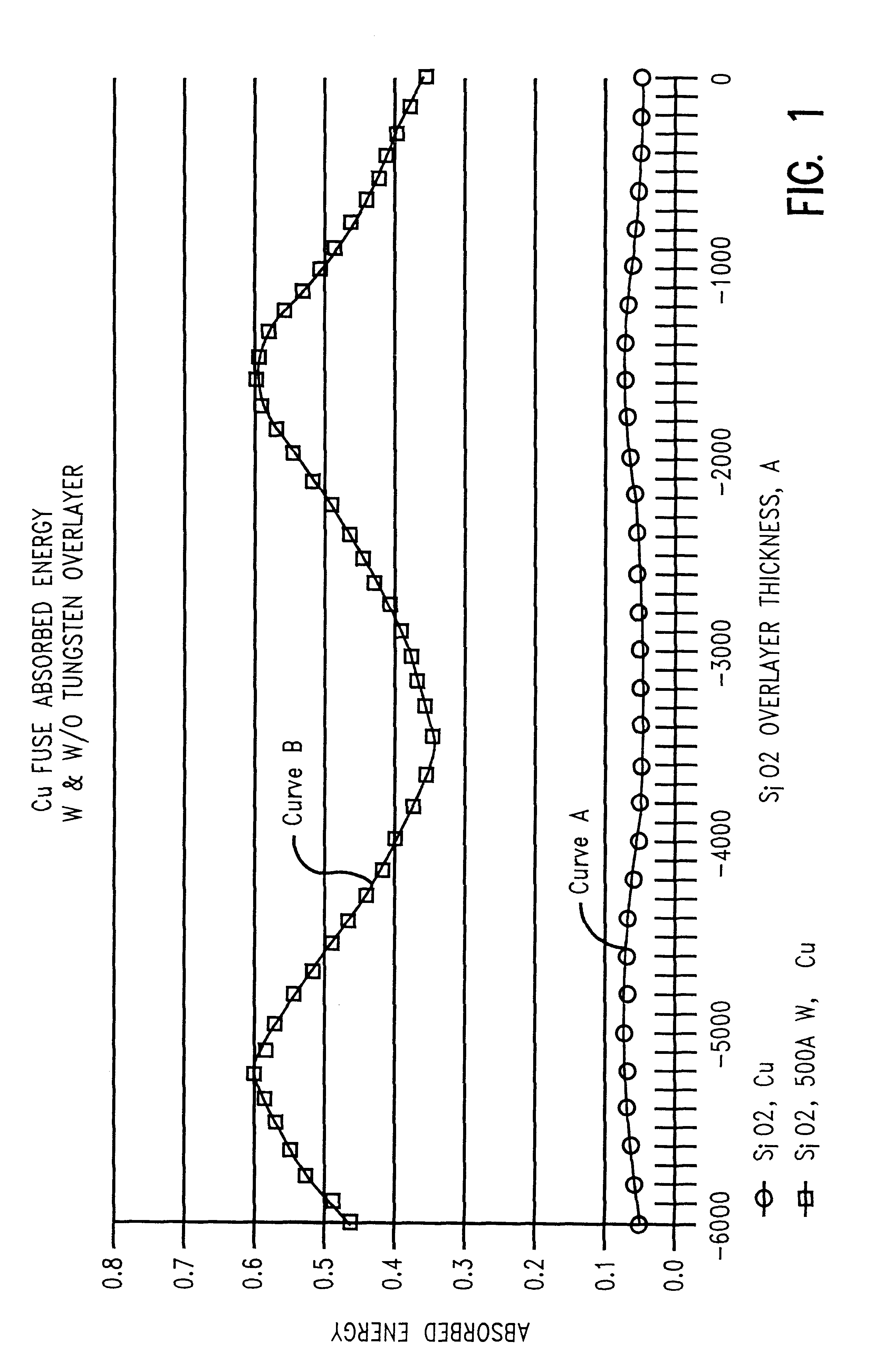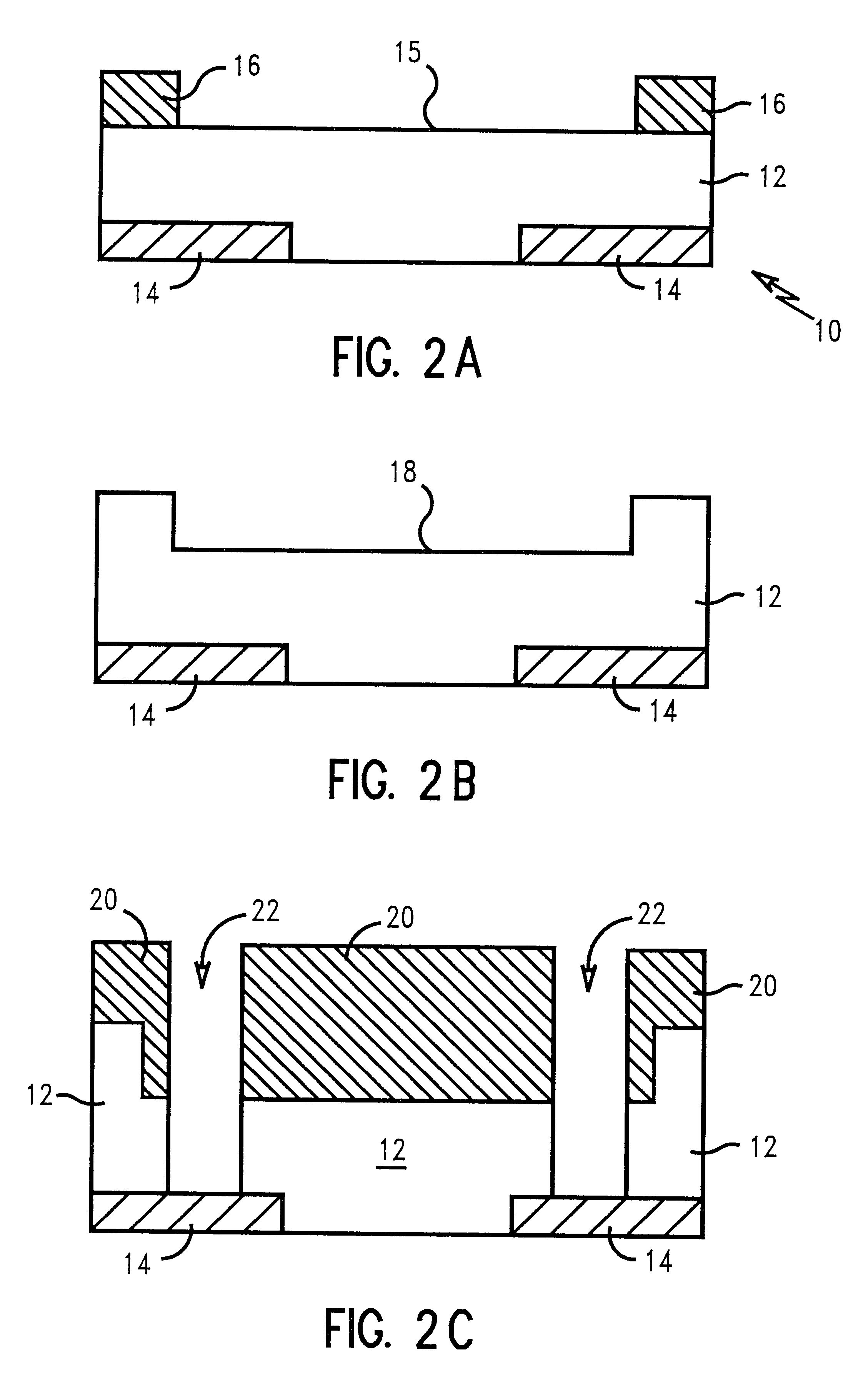High laser absorption copper fuse and method for making the same
a high-energy, copper-based technology, applied in the field of fuse elements, can solve the problems of high electrical resistance, adversely affecting any element adjacent to the blown fuse link, and disrupting line continuity
- Summary
- Abstract
- Description
- Claims
- Application Information
AI Technical Summary
Benefits of technology
Problems solved by technology
Method used
Image
Examples
Embodiment Construction
)
In describing the preferred embodiment of the present invention, reference will be made herein to FIGS. 1-3 of the drawings in which like numerals refer to like features of the invention. Features of the invention are not necessarily shown to scale in the drawings.
In accordance with the present invention, it has been found that a high laser absorption copper conductor minimizes the laser energy needed to delete the fuse portion. Significantly, this type of fuse structure allows for formation of copper fuses that can be deleted with appreciably less incident energy, mainly by increasing the absorptivity of the fuse link. This would further allow for closer spacing or smaller dimensions of fuse links and adjacent circuitry.
The invention utilizes a metal wiring line containing a fuse link segment wherein the fuse link segment is composed of a stack of at least two electrically conductive metallic materials. The underlayer film in the stack of metallic materials is the primary electric...
PUM
 Login to View More
Login to View More Abstract
Description
Claims
Application Information
 Login to View More
Login to View More - R&D
- Intellectual Property
- Life Sciences
- Materials
- Tech Scout
- Unparalleled Data Quality
- Higher Quality Content
- 60% Fewer Hallucinations
Browse by: Latest US Patents, China's latest patents, Technical Efficacy Thesaurus, Application Domain, Technology Topic, Popular Technical Reports.
© 2025 PatSnap. All rights reserved.Legal|Privacy policy|Modern Slavery Act Transparency Statement|Sitemap|About US| Contact US: help@patsnap.com



